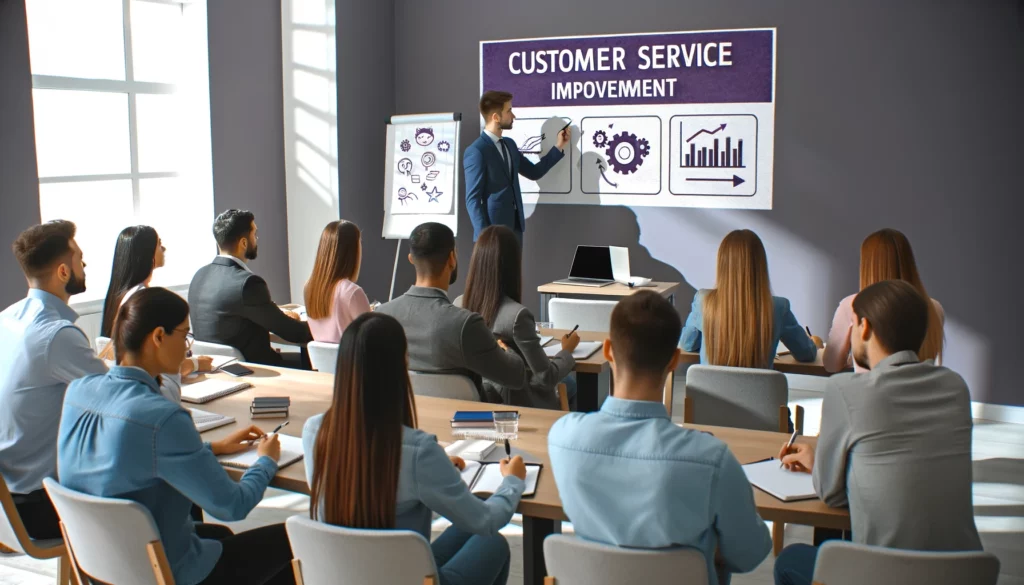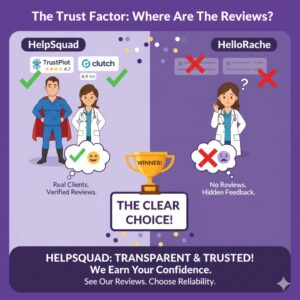What Causes Poor Customer Service and How Can It Be Effectively Improved?
14 Sep 2015 By: Mary Dellosa
Updated
Many companies struggle with bad customer service. In a tough market, great service is crucial for success. Understanding and fixing these issues can be hard.
What is poor customer service?
Let’s first define what is a bad customer service. It happens when a company or its staff doesn’t meet customer expectations. This can look like rudeness, long waiting times, unclear information, or ineffective solutions.
When customers face poor service, it’s frustrating and discouraging. Imagine calling for help and meeting a rude representative. This not only upsets customers but also makes them rethink their choice to support that business. Poor service can break trust and loyalty, hurting the business long-term.
Lack of customer service can quickly lead to bad reviews. When customers are unhappy, they often tell others or post online. This can hurt a company’s reputation and push away potential customers. In our fast-paced digital world, just one negative comment can impact a business’s success.
This can also mean lost sales opportunities. Happy customers often buy more or upgrade what they have. But if they’re treated poorly, they might hesitate to spend more with a company that let them down. This can lead to lost revenue and missed chances to boost profits.
Lastly, It can hurt employee morale and productivity. If employees aren’t trained or supported well, they can become frustrated and less engaged. This lowers their motivation and job satisfaction, affecting their work. Unhappy employees often give poor service, leading to a cycle of dissatisfaction for everyone involved.
In conclusion, this can include various actions that disappoint customers. Bad customer service can damage a business’s reputation, drive customers away, lower profits, and upset employees. Good service is key to keeping customers and growing a business.
Impacts of poor customer service

Customer service is key for any business because it shapes how customers see you. Poor service can hurt your business in many ways. Let’s look at what happens when customer service is bad:
1. Negative reputation: When customers have a bad experience, they tell others, harming your reputation. In today’s world, one bad review can spread quickly online. This can drive potential customers away. Fixing a damaged reputation is hard, so always aim for great customer service.
2. Lost customers: Bad service drives customers away. If they feel ignored, they’ll choose a competitor. In a competitive market, you must always provide great service.
3. Decreased loyalty: Great customer service builds trust and keeps customers coming back. When customers feel valued, they stay loyal. Poor service breaks this loyalty, leading to fewer repeat customers. Unhappy customers won’t return and might tell others to avoid your business. To build loyalty, always offer personal interactions, quick solutions, and clear communication.
4. Impact on employee morale: Bad customer service affects employees too. Dealing with unhappy customers can demotivate and frustrate them. Without support, they feel undervalued. This leads to high turnover and trouble attracting good talent. Happy employees need the tools to provide great service.
5. Missed chances to improve: Customer feedback helps businesses grow. Poor service means customers are less likely to share their thoughts. This leads to missed chances to fix issues and improve. Valuing feedback helps businesses stay ahead and keep getting better.
Poor customer service harms businesses in many ways. To avoid this, companies must prioritize great service. Train and empower employees to exceed customer expectations. This creates loyal customers who drive success.
10 examples of bad customer service and how they can be improved

Let’s examine some common examples of bad customer service and explore how businesses can turn these situations around:
- Long waits: Reduce them by optimizing staff, enhancing self-service options, or updating customers on wait times.
- Lack of empathy: Teach employees to listen to customers’ concerns and show real care. Apologize for mistakes and stay involved until the issue is fixed.
- Inconsistent information: Train all employees well and provide them with accurate, updated info. Use tools to share knowledge and keep communication consistent.
- Lack of personalization: Teach employees to understand and value each customer’s needs. Use CRM systems to track preferences and customize interactions.
- Unresolved complaints: Create a clear, quick process to handle complaints. Empower employees to resolve issues immediately and find satisfying solutions.
- Inadequate product knowledge: Train employees thoroughly on your products. Encourage ongoing learning and offer resources for continuous education.
- Unresponsive support: Invest in a strong customer support system with multiple contact options. Set clear response times and prioritize quick replies.
- Hidden fees: Be open about pricing. Share all fees upfront and address customer concerns right away.
- Lack of appreciation: Thank your customers for their loyalty. Start programs like loyalty rewards or send personalized thank-you notes.
- Untrained staff: Provide thorough training for employees to deliver great service. Support ongoing professional growth.
Trending now
Poor customer service hurts businesses, leading to lost customers, revenue, and negative reviews. Key issues include ignoring service requests, unresolved issues, long wait times, unknowledgeable staff, and rude behavior. Causes include hiring unfit employees, inadequate training, low engagement, burnout, and misunderstanding customer expectations. Improving these areas can enhance customer satisfaction and prevent churn.
Good customer service is vital for strong customer relationships but can harm them if handled poorly. Common issues include hard-to-reach agents, long wait times, repeated information requests, call transfers, lack of empathy, negative language, rude behavior, and forced phone calls. Solutions involve hiring empathetic agents, reducing wait times, proper training, and respecting customer communication preferences. Investing in quality customer care is essential to retain customers and revenue.
Think Like Your Customers!
To deliver exceptional customer service, it’s essential to step into the shoes of your customers. Imagine you are the customer interacting with your brand—what are their expectations? What challenges or frustrations might they face?
This is where you need to channel the concept of “Being John Malkovich”—find that small hidden door that allows you to see the world through your customers’ eyes. Understanding their perspectives can help you tailor your services to meet their needs better.
For example, Magnolia Bakery utilized A/B testing to better understand customer preferences. By experimenting with different approaches, they increased their email conversion rate by 39%. This demonstrates the power of thinking like your customers and continually refining your approach based on their feedback and behaviors.
Empower Your Frontline Employees
Your customer service team is the face of your business. Empowering them with the right tools, training, and autonomy to solve customer problems can drastically improve service quality. Equip them with up-to-date resources, provide continuous training, and allow them to make decisions on the spot to resolve customer issues without needing managerial approval.
Creating a culture where employees feel valued and supported will also boost their confidence in dealing with customers, leading to more positive interactions. By prioritizing employee satisfaction, you indirectly improve the customer experience.
Leverage Technology to Enhance Customer Experience
Modern technology offers countless ways to streamline customer service and enhance the overall experience. Implementing customer relationship management (CRM) systems, AI-powered chatbots, and self-service portals can make a significant difference. These tools not only help resolve issues quickly but also allow customers to get the help they need on their terms.
For example, Wasabi Technologies used creative video campaigns to educate their customers in a fun and engaging way. By leveraging a unique approach, they were able to break through the noise and provide value to their customers, which improved their overall service experience.
Customer complaint is a gift!
Contrary to popular belief, a customer complaint should be seen as an opportunity rather than a burden. Every complaint provides crucial feedback that can help businesses identify areas for improvement and enhance the overall customer experience.
Encourage all feedback, good or bad. Have a strong system to handle it. Address complaints quickly to keep customers and build a reputation for great service.
Measuring Customer Satisfaction to Improve Service
To improve customer service, measure customer satisfaction. Collect and analyze feedback to find strengths and weaknesses. Use surveys, feedback forms, and monitor social media for insights.
Once you have feedback, act on it. Spot patterns and prioritize improvements. Regularly update your customer service strategies to meet changing expectations.
In conclusion, poor customer service hurts businesses. Understand the causes and improve service with clear strategies. Define bad service, acknowledge its impacts, learn from mistakes, treat complaints as opportunities, and measure satisfaction. This enhances service and builds strong customer relationships.
Ready to improve your customer service and transform your business operations? HelpSquad BPO is here to help. With our dedicated virtual assistants and 24/7 customer service team, you can elevate your business with ease. We offer bilingual support, back-office management, and research services at competitive rates starting at just $8.50 per hour. Enhance your efficiency and stay ahead of the competition in the digital age. Start your trial today and experience the HelpSquad difference firsthand!


